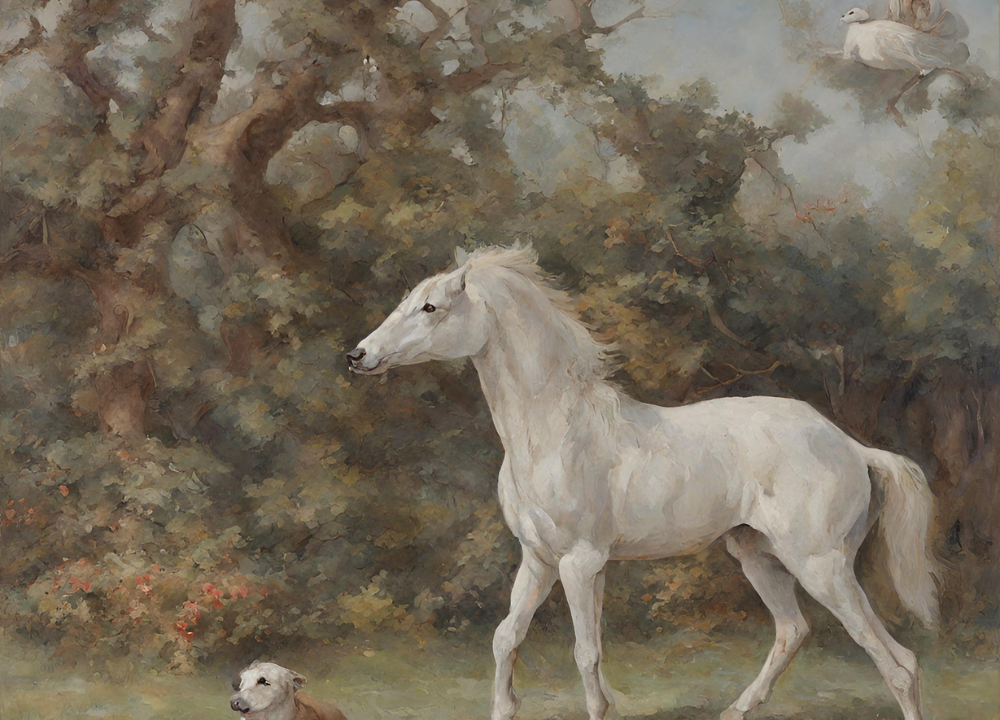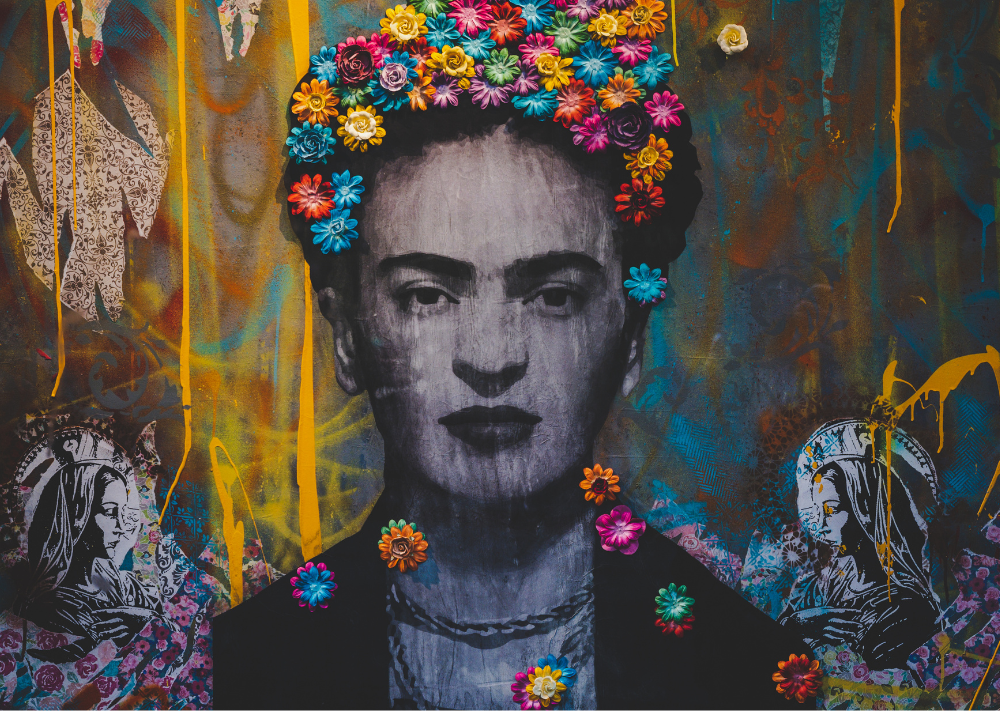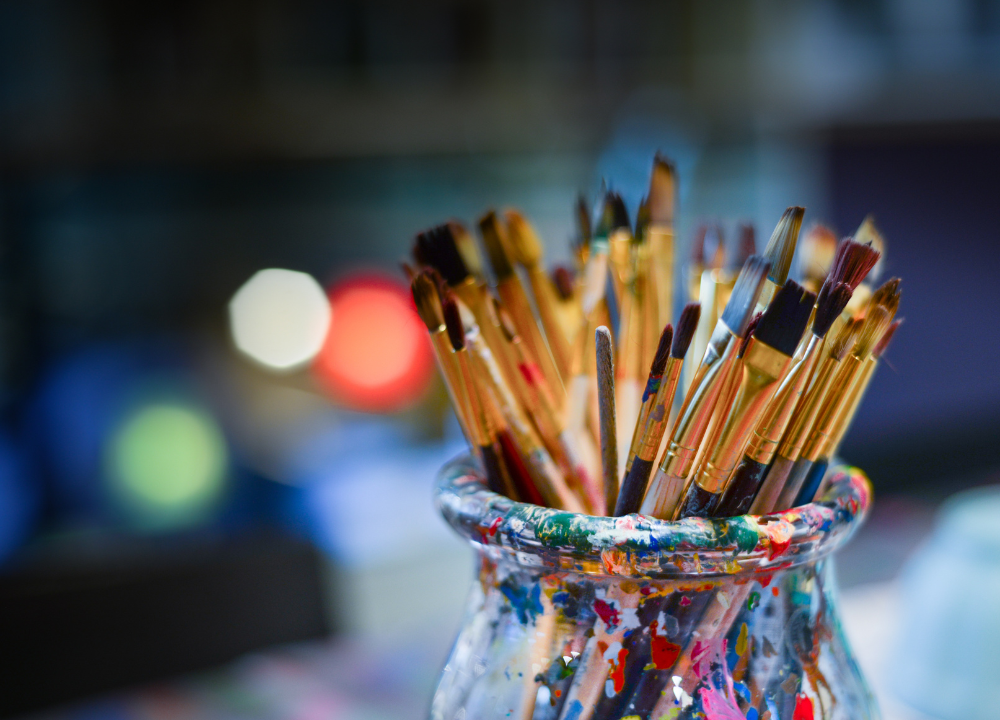Portraiture has a rich history that spans centuries. It reflects changes in culture, society, and technology.
Artists have used portraiture to capture not just the likeness of a person but also their spirit and status. The evolution of portraiture in art history is a fascinating journey. From ancient civilizations to modern times, portraits have served many purposes.
They reveal how people viewed themselves and their place in the world. Early portraits aimed to show power or beauty. Later, artists focused on emotions and character. Techniques changed, too, with the introduction of oil paints and photography. Understanding this evolution helps us appreciate the art form. It shows how portraiture connects us to history and the human experience. Join us as we explore this captivating evolution through time.
Origins Of Portraiture
The evolution of portraiture in art history reflects humanity’s deep desire to capture identity and essence. The origins of portraiture go back thousands of years. Early artists aimed to represent not just faces but also the spirit and status of their subjects. These first portraits laid the foundation for how we understand individuals in art today.
Ancient Civilizations
Ancient civilizations were the first to create portraits. They used various materials to capture likenesses. These early artworks served multiple purposes. They depicted rulers, gods, and important figures. Here are some notable examples:
- Egyptians: Created sculptures and paintings in tombs.
- Greeks: Focused on realism and ideal beauty.
- Romans: Made busts that showed age and wisdom.
Ancient Egyptian portraits often featured pharaohs. These images aimed to ensure a safe passage to the afterlife. Greek portraiture advanced with a focus on realism. Artists like Polykleitos set standards for ideal proportions. Roman portraiture took a different path. It emphasized individual characteristics, including flaws.
| Civilization | Style | Purpose |
|---|---|---|
| Egypt | Symbolic | Afterlife representation |
| Greece | Realistic | Celebration of human beauty |
| Rome | Veristic | Documenting real-life features |
This evolution marked the beginning of portraiture as a significant art form. Artists sought to convey more than just appearance. They aimed to capture the essence of their subjects.
Cultural Significance
Portraiture holds great cultural significance across different societies. It provides insight into the values and beliefs of a time. Portraits convey status, identity, and personal stories.
In many cultures, portraits serve to:
- Honor leaders and heroes.
- Document history and lineage.
- Reflect societal norms and ideals.
For instance, in the Renaissance, portraits became a sign of wealth. Wealthy patrons commissioned portraits to showcase power. Artists like Leonardo da Vinci and Titian became famous for their work. Their portraits captured not just faces, but emotions and narratives.
In Asia, portraiture also carries deep cultural meaning. Chinese paintings often depict ancestors. This practice emphasizes respect for lineage and tradition. Portraits in African cultures may celebrate community and spirituality.
Overall, the cultural significance of portraiture shapes how societies remember their past. It connects people to their history and reinforces identity.
Renaissance Innovations
The Renaissance was a turning point in art history. It marked a shift toward humanism and realism. Artists began to focus on the individual. They wanted to capture human emotions and experiences. This focus led to important innovations in portraiture. Artists used new techniques to create lifelike images. These innovations changed how people viewed art and themselves.
Realism And Detail
During the Renaissance, artists emphasized realism and detail in their portraits. They studied anatomy and light. This study helped them depict the human form accurately.
Some key features of Renaissance portraiture include:
- Naturalism: Artists aimed for lifelike representations.
- Attention to Detail: Textures in clothing and skin were carefully painted.
- Emotional Expression: Artists captured feelings and moods.
- Use of Light: Chiaroscuro techniques created depth and dimension.
The table below shows how realism influenced art during this period:
| Technique | Description |
|---|---|
| Anatomical Studies | Artists studied human anatomy to improve accuracy. |
| Oil Painting | Allowed for richer colors and finer details. |
| Perspective | Created a sense of depth in the background. |
These techniques made portraits more engaging. They connected viewers to the subjects. Portraits were no longer just images. They became reflections of human experiences.
Famous Portrait Artists
Several artists stood out during the Renaissance for their portrait work. They pushed boundaries and set new standards.
Some of the most notable artists include:
- Leonardo da Vinci: Known for the “Mona Lisa.” His work features incredible detail and emotion.
- Raphael: Famous for his serene and graceful portraits, like “The Madonna of the Pinks.”
- Titian: He used vibrant colors and textures, especially in his portraits of nobility.
These artists had a significant impact on portraiture:
- They emphasized individuality and personality.
- They improved techniques that influenced future generations.
- Their works are still celebrated and studied today.
The Renaissance innovations in portraiture shaped the art world. They set the stage for future artists to explore human expression.
Baroque Portraits
The evolution of portraiture in art history reflects changes in society, culture, and technology. Baroque portraits, which emerged in the 17th century, are known for their emotional depth and rich detail. Artists aimed to capture not just the likeness of their subjects but also their character and status. The Baroque period was marked by a desire for drama and realism. Portraits from this time often showcased intense expressions and elaborate backgrounds.
Dramatic Expressions
Baroque portraits are famous for their dramatic expressions. Artists used techniques to create emotional impact. This was done through the use of light, shadow, and color. The following points highlight key aspects:
- Chiaroscuro: The contrast between light and dark added depth.
- Facial Features: Artists focused on eyes and mouth to show feelings.
- Pose and Gesture: Body language expressed emotions and personality.
Many Baroque portraits portrayed subjects in moments of thought or action. Artists like Caravaggio and Rembrandt mastered this style. Their use of dramatic lighting created a sense of realism.
| Artist | Notable Work | Technique |
|---|---|---|
| Caravaggio | The Calling of Saint Matthew | Chiaroscuro |
| Rembrandt | The Night Watch | Dynamic Posing |
| Gian Lorenzo Bernini | Portrait of Louis XIV | Expressive Detail |
The tension in the faces of subjects draws viewers in. This emotional engagement was a key feature of Baroque portraiture.
Social Status Representation
Baroque portraits also served to show social status. Wealthy patrons commissioned these works to display power and prestige. Many aspects highlighted their status:
- Rich Clothing: Fabrics were luxurious and often adorned with jewelry.
- Backgrounds: Settings included grand architecture or lush landscapes.
- Symbolism: Objects in the portrait often signified wealth or achievements.
Portraits of nobility often included family crests or other symbols of lineage. Artists paid close attention to details that communicated wealth. For example:
- Expensive Fabrics: Silk, velvet, and lace were common.
- Jewelry: Gold and precious stones were prominently displayed.
- Props: Items like books or globes showed education and influence.
These elements were not just decorative. They reinforced the subject’s position in society. Baroque portraits became a way for individuals to claim their place in history.
19th Century Changes
The 19th century marked a significant turning point in the evolution of portraiture. Artists faced new challenges and opportunities. The invention of photography changed how people viewed portraits. Traditional methods evolved as artists explored new styles. This period saw a blend of realism and innovation, leading to fresh expressions in art.
Photography’s Impact
Photography emerged in the early 19th century. It offered a new way to capture likenesses. This invention changed portraiture forever. Artists now faced competition from this new medium.
Key effects of photography on portraiture:
- Increased accessibility to portraits
- Shift from formal to candid representations
- Influence on artistic techniques
Portrait paintings became less about mere likeness. They focused more on personality and emotion. Artists began to experiment with light and shadow. These changes made portraits feel more alive.
| Photography Innovations | Impact on Portraiture |
|---|---|
| Daguerreotype | Made portraits affordable and accessible |
| Collodion Process | Enabled clearer, more detailed images |
| Portable Cameras | Allowed for outdoor and candid photography |
Artists like Gustave Courbet and Édouard Manet responded to this shift. They embraced realism and challenged traditional techniques. Photography encouraged them to capture real life. Portraiture became a mix of art and photography.
Impressionism Influence
Impressionism emerged in the late 19th century. This movement changed how artists approached portraiture. Impressionist artists focused on light and color. They aimed to capture moments rather than exact likenesses.
Characteristics of Impressionist portraits:
- Loose brushwork
- Vivid color palettes
- Emphasis on natural light
Famous Impressionists like Claude Monet and Pierre-Auguste Renoir explored new techniques. They painted portraits that felt spontaneous. These artworks reflected a moment in time rather than a posed image.
Impressionism also brought a new subject matter. Artists began to paint everyday people. Portraits included friends, family, and common folks. This made art more relatable.
Some key features of Impressionism in portraiture:
- Focus on atmosphere and mood
- Use of complementary colors
- Experimentation with composition
Overall, the 19th century transformed portraiture. Photography and Impressionism played major roles. These influences reshaped how artists viewed their subjects. Portraiture became more than just likeness. It became a reflection of life.
Modern Portraiture
Modern portraiture marks a significant shift in how artists depict human figures. This era moves away from traditional realism. Artists now explore deeper emotions and thoughts. They challenge norms and express individuality. The portrayal of people has evolved, reflecting cultural changes and new ideas. Modern portraiture invites viewers to engage in a dialogue. It is about connection, identity, and expression.
Abstract Interpretations
Abstract interpretations in modern portraiture push boundaries. Artists use shapes, colors, and forms to express feelings rather than realistic likeness. This style invites viewers to think beyond the surface. Here are some key features:
- Color Play: Bold colors evoke emotions.
- Distorted Forms: Unusual shapes create intrigue.
- Symbolism: Objects represent deeper meanings.
Famous artists like Pablo Picasso and Wassily Kandinsky embraced abstraction. They transformed how we view identity. Below is a table showing notable abstract portrait artists:
| Artist | Style | Notable Work |
|---|---|---|
| Pablo Picasso | Cubism | Les Demoiselles d’Avignon |
| Wassily Kandinsky | Abstract Expressionism | Composition VII |
| Frida Kahlo | Surrealism | The Two Fridas |
These artists opened doors to new ways of seeing. Their work encourages personal interpretation. Viewers engage with the piece, creating their own meanings.
Diverse Perspectives
Diverse perspectives are vital in modern portraiture. Artists express various identities and experiences. This includes race, gender, and culture. They showcase stories that often remain unheard. Representation matters in art. Here are some themes explored:
- Identity: Artists reflect their own backgrounds.
- Social Issues: Portraits highlight struggles and achievements.
- Community: Collective experiences shape artistic expression.
Contemporary artists like Kehinde Wiley and Amy Sherald focus on underrepresented communities. Their portraits celebrate culture and identity. Below is a list of themes in diverse portraiture:
- Race and Ethnicity
- Gender Identity
- Age and Experience
- Social Justice
This diversity enriches the art world. It invites conversations and reflections. Modern portraiture serves as a mirror, showing the richness of human experience.
Conclusion
Portraiture has changed a lot through the years. Each era brought new styles and ideas. Artists reflected their times in every brushstroke. Today, we see both classic and modern influences. Technology also plays a big role now. Digital tools open new paths for creativity.
Understanding this evolution helps us appreciate art more. It connects us to the past and the present. The journey of portraiture continues to inspire. What will the future hold for this timeless form?




